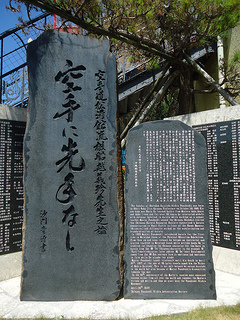Karate
- Japanese: 空手 (karate)
Karate (lit. "empty hand") is, along with kung fu, one of the most stereotypical East Asian martial arts. Much is said and believed about karate, but, contrary to a myriad of nebulous popular conceptions, karate comprises a specific set of schools, forms, and styles, with a specific set of histories.
Karate as it is known in Japan today originates in Okinawa, where, in the 19th century, Okinawan martial arts techniques, known as Uchinaa-tii (J: Okinawa-te, "Okinawa hand"), developed since around the 15th century, were combined with techniques from Chinese quan fa (J: kempô), developed since around the 14th century. This new combined style or form was known as Tô-dii or Tû-dii (J: Tô-te), meaning "China hand."
Following the fall of the Ryûkyû Kingdom, and its annexation into Japan, former Ryukyuan scholar-aristocrat Itosu Ankô, considered by many today to be the father of modern karate, then introduced this form into the Okinawan public schools in 1901. He coined the term "karate" around this time, using the same characters as Tô-te, but a different reading.[1]
Karate then came to be divided into three styles, based in different areas of the Okinawan capital, namely, Shuri-te, Naha-te, and Tomari-te. Funakoshi Gichin introduced these forms into mainland Japan in 1922, altering the characters used to write "karate" to their current form, meaning "empty hand," in 1929.
References
- History of Karate exhibition, Hamilton Library, University of Hawaii at Manoa, Summer 2009.
- ↑ Tô-te, or karate, meaning "China hand," is written as 唐手. The character 唐, referring to the Tang Dynasty, or to Chinese culture & civilization more broadly, can be read in Japanese as either tô or kara.
